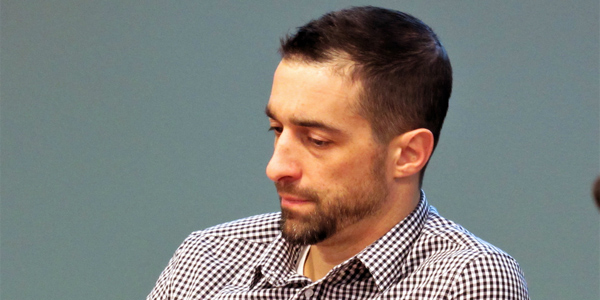By Amanda Durish Cook
CARMEL, Ind. — MISO officials Tuesday suggested more ways for energy storage devices to participate in the footprint in the future but didn’t commit to any final courses of action.
The measures could involve generator-and-storage interconnection combinations and competitive bidding on storage projects that solve transmission issues, stakeholders learned at a Jan. 23 Energy Storage Task Force meeting. Created last year, the task force’s mission is to identify storage-related grid and market obstacles and forward them to the Steering Committee for assignment to other stakeholder committees. (See MISO in 2018: Storage, Software, Settlements and Studies.)
MISO Director of Planning Jeff Webb told the storage task force that the Interconnection Process Task Force later this year will discuss how “hybrid interconnections” — where, for example, wind generation and energy storage join the grid at the same point of interconnection — would proceed through the interconnection queue.
“The hybrid systems are a really big deal, so I’m happy to see co-located systems on the screen,” task force Chair John Fernandes said, gesturing to the presentation.
No Traction
Wind on the Wires’ Rhonda Peters said the hybrid interconnection discussion failed to gain much traction in the task force last year, in part because MISO staff said they had to run proposals past the RTO’s legal department.
MISO also hasn’t added a storage option to the requirement that its planners consider alternatives to transmission construction, according to Webb. It finalized its non-transmission alternatives Business Practices Manual in August without including storage devices.
Webb said MISO will have to make several decisions before storage solutions can be pursued instead of new wires, including how many peak hours per day a storage device will be available to solve congestion.
Storage projects could be cost-shared and competitively bid if they solve issues typically handled by market efficiency projects, Webb said; MISO’s 345-kV minimum requirement will have to be reassessed, he added.
MISO also must address its practice of only allowing transmission developers to propose projects to address transmission reliability issues, he said. Webb also said MISO has yet to explore how it can gauge the adjusted production costs of storage projects or how storage-as-wires dispatch will be handled — that is, whether the RTO or the storage owner will take functional control.
Indiana Utility Regulatory Commission staffer Dave Johnston said that if storage owners elect to have their devices function as transmission service, MISO should assume dispatch control.
“I’m not certainly going to sit here and say it’s this task force’s duty to try and change that,” Fernandes replied.
Webb also said stakeholders must consider retirement provisions for storage-as-transmission, saying that a “suitable” lead time might be the current three-year lead notice required of traditional transmission assets. “You can’t replace it with a transmission solution overnight. It takes years,” he said.
“This all could very well be a ‘be careful what you wish for’ for storage owners,” Fernandes said. “These are excellent points that need to be considered.”
Storage could be eligible to provide black start service in MISO, if resource owners pledge a three-year commitment and MISO adjusts some restrictions it imposes beyond the NERC definition of black start resources, said Kim Sperry, the RTO’s director of market engineering.
Customized Energy Solutions’ David Sapper urged MISO and stakeholders to consider how storage could earn auction revenue rights and financial transmission rights.
Current Options for Storage
Sperry said the RTO currently has only one market definition unique to storage: Stored Energy Resource Type I, which can participate only as regulating reserves. Sperry said storage can also participate as either a demand response, emergency DR or load-modifying resource.
MISO asked FERC in April to allow creation of a Stored Energy Resource Type II Tariff definition following Indianapolis Power and Light’s complaint against the RTO’s restrictive storage participation rules (ER17-1376). (See MISO Rules Must Bend for Storage, Stakeholders Say.) A Type II resource must be able to continuously discharge for four consecutive operating hours across a coincident peak each day. In return, it will be able to function as DR in the day-ahead market and can participate in the annual capacity auction.
We Energies’ Tony Jankowski asked if MISO would create provisions to prohibit a storage device from withdrawing at will from markets to operate as a behind-the-meter resource. Sperry said the idea was to create rules that incent storage devices enough to participate visibly in MISO markets, in front of the meter.
Future task force talks will involve FERC’s pending Notice of Proposed Rulemaking, which would require RTOs to allow storage resources of 100 kW and above to participate in capacity, energy and ancillary services markets (RM16-23). (See FERC Rule Would Boost Energy Storage, DER.)
But Fernandes warned task force attendees “not to rely too heavily” on the rulemaking to guide the task force’s work. Only one of the current commissioners — Cheryl LaFleur — took part in drafting the NOPR, Fernandes noted, and the newcomers could make changes in the final order.






